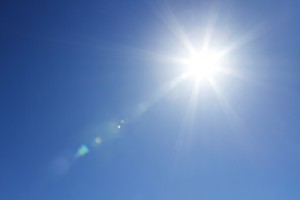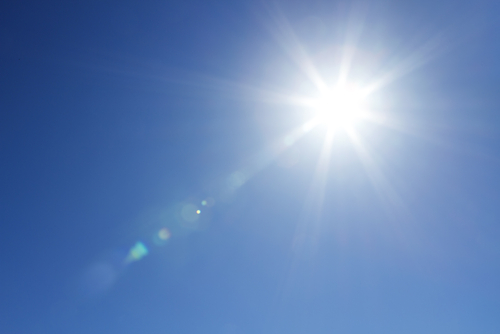It’s that time of year again…the clocks go back and daily life can feel a bit of a slog. We wake up, it’s dreary, we get home, it’s dark – joy…We know it happens every year here in the UK but it still renders many of us pretty miserable, so why does the changing of the clocks often make us slaves to the weather and change our mood for the worst? And more importantly what can we do to combat our seasonal slump and grump?
Feeling sad?
Seasonal affective disorder (SAD) is a form of depression that people experience at a particular time of year or during a particular season. Most of us are affected by the change in seasons – it is normal to feel more cheerful and energetic when the sun is shining and the days are longer, or to find that you eat more or sleep longer in winter. However, if you experience SAD, the change in seasons will have a much greater effect on your mood and energy levels, and lead to symptoms of depression that have a significant impact on your day-to-day life.
Most people experience SAD during the winter. Less commonly, some people find that they experience SAD in reverse – with depressive symptoms occurring in summer. You are more likely to experience SAD if you live in a country where there are significant changes to daylight, temperature and weather between seasons.
Because of this, SAD is more common in Scandinavia, Europe, North America, North Asia, and in southern parts of Australia and South America. It’s extremely rare to find people with symptoms of SAD living near the equator, where daylight hours are long and bright all year round. In northern Europe, it is estimated that about one in ten people experience some symptoms of SAD.
Spotting SAD symptoms
If you experience SAD symptoms for two or three years, you are likely to receive a diagnosis of SAD. There are many different symptoms of SAD, and you may experience some or all of the following:
- Lack of energy for everyday tasks, such as studying or going to work
- concentration problems
- Sleep problems
- Depression – feeling sad, low, tearful, guilty, like you have let others or yourself down; sometimes hopeless and despairing, sometimes
- Apathetic and feeling nothing
- Anxiety – tenseness and inability to cope with everyday stresses;
- panic attacks
- Mood changes – in some people, bursts of hyperactivity and
- Cheerfulness (known as hypomania) in spring and autumn
- Overeating – particularly craving carbohydrates and putting on weight
- Being more prone to illness – some people with SAD may have a lowered immune system during the winter, and may be more likely to get colds, infections and other illnesses
- Loss of interest in sex or physical contact
- Social and relationship problems – irritability or not wanting to see people; difficult or abusive behaviour
- Alcohol or drug abuse
In the UK, you may start to get SAD symptoms between September and November and they may continue until March, April or even May the following year. If you experience symptoms in reverse, they may begin around March and continue into the autumn. Symptoms tend to go away either suddenly (often with a short period of hyperactivity) or gradually, depending on the amount of sunlight in the spring and early summer.
For some people, symptoms are fairly mild and last for a shorter period, mainly during December, January and February, and are known as the ‘winter blues’, or sub-syndromal SAD. A small percentage of people have very severe symptoms and find it hard to carry out day-to-day tasks in winter without continuous treatment.
How to help yourself
Many people with SAD notice that their symptoms of depression are seasonal and develop self-help strategies that allow them to manage the condition themselves, either on their own or with other treatment. Here are some suggestions from Mind that might be helpful:
Make the most of natural light
We know that being outdoors throughout the winter doesn’t cure SAD, because people who work outside also experience SAD symptoms. However, it is still worth taking opportunities to be exposed to natural light when possible. Going outdoors, particularly around midday or on bright days, can be effective in reducing symptoms. It might help to try to wear sunglasses a bit less often to allow greater exposure to natural light (only if it is safe and comfortable to do so). Having pale colours within the home that reflect light from outside can also be helpful.
Avoid stress
People are more likely to suffer from stress in winter. If you find this time of year difficult, try to plan ahead to reduce the amount of stressful or difficult activities you have during this time. Plan stressful events for summer where possible, particularly major ones, such as changing jobs, moving home, doing decorating or repairs or having a baby.
Take advantage of times when you feel well in summer to prepare for the winter – for example, by buying Christmas presents or stocking up your kitchen cupboards. If you can, try to make more spare time to rest, relax or do pleasant activities in the winter. Perhaps pamper yourself physically with a massage, or learn a relaxation technique to help you unwind.
Exercise and eat well
Try to keep physically active during the winter. While you may not feel like it at the time, physical activity can be very effective in lifting your mood and increasing your energy levels. It doesn’t have to be anything particularly strenuous – doing housework, gardening or going for a gentle walk can all help. Doing something physical outside in a green space, such as the park or the countryside, has been shown to be especially helpful.
A healthy diet is also important, and you should try to balance the common SAD craving for carbohydrates, such as pasta and potatoes, with plenty of fresh fruit and vegetables. Some people find that taking extra vitamin B12 is helpful.
Jet off somewhere sunny!
If you can afford it, a holiday to a sunnier climate is likely to reduce symptoms, Tenerife is still warm right now with an average temperature of 21°C, and Fuerteventura is a none too shoddy 21 °C. You may find that on returning to the UK your SAD will temporarily become much worse. It seems that the contrast in light levels can do more harm than good sometimes, so check with your doctor or the SAD Association before going away if you have any doubts.
Consider using a light box
Using a light box has been found to be an effective treatment for SAD, as it increases your exposure to light during the winter months. Light boxes are at least ten times the intensity of household lights. They are available in different strengths and sizes – for SAD, a strength of at least 2,500 lux is recommended. You can also get them as visors.
People benefit from using a light box in different ways. Many people find that it is useful to use one every day, but it is best to experiment to find a routine that works for you. The average use is one or two hours a day during darker months and the maximum is about four hours. Some light boxes are much brighter and can cut treatment time down to half an hour. You can use your lights at any time of day, although it’s best not to use it before you go to bed, as the effect of the light may make it hard to sleep.
You can’t get light boxes on the NHS, so it’s best to try one out before buying – manufacturers and suppliers may be able to offer you a free trial, or you could hire one for a short period first. (See useful contacts.)
So, keep well, grab the sunshine when you can and stay strong – the clocks go forward in five months…
Keep an eye on the UK’s weather forecast – and get out there and get your vitamin D fix while you can!
© Mind










